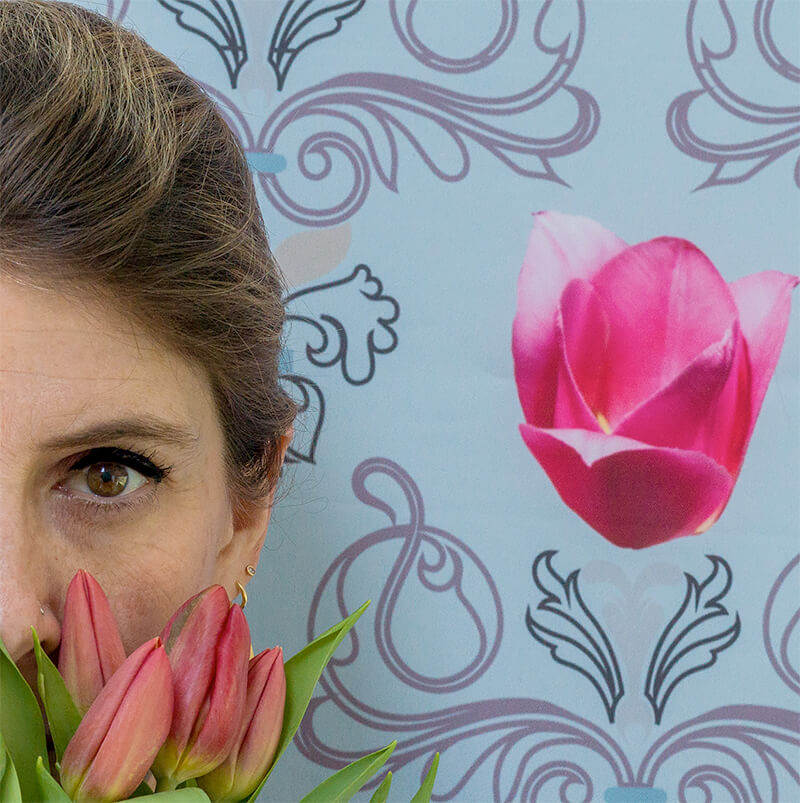Diana Cheren Nygren is a fine art photographer from Boston, Massachusetts. Her work explores the relationship of people to their physical environment and landscape as a setting for human activity. Her photographs address serious social questions through a blend of documentary practice, invention, and humor. We asked a few questions about her life and work.
All About Photo: Tell us about your first introduction to photography. What drew you into this world?
Diana Cheren Nygren: I cant remember for certain when I had my first inexpensive camera, but my interest was sufficiently evident that for my 16th birthday my parents gave me a Pentax K1000. I was going to spend the summer living with some of my mother's friends in Florence, one of whom was a fairly serious amateur photographer. He spent the summer teaching me the ins and outs of photography, drilling in lessons about how to control light and depth of field by having me photograph an exhibition of Arnaldo Pomodoro's sculptures at the Forte Belvedere.
Where did you study photography?
In college I majored in Art History and was drawn to the work of Diane Arbus and Cindy Sherman, but my first formal instruction in photography was after college when I took evening courses at the New England School of Photography. NESOP was my refuge from a dead end day job.
Do you remember your first shot? What was it?
I don't remember my first shot, but I remember the first real project I developed. Inspired by Cindy Sherman's Untitled Film Stills, I bought a Seagull twin lens reflex camera and shot a series of black and white self-portraits in which I inhabited a number of personae. For the most part it was a copy-cat project, but the personae I invented included both men and women, story book characters and celebrities, young girls and old women. And I limited myself to found-objects and clothing around my house to create costumes and props, and all of the images were shot either in my house or in my yard.
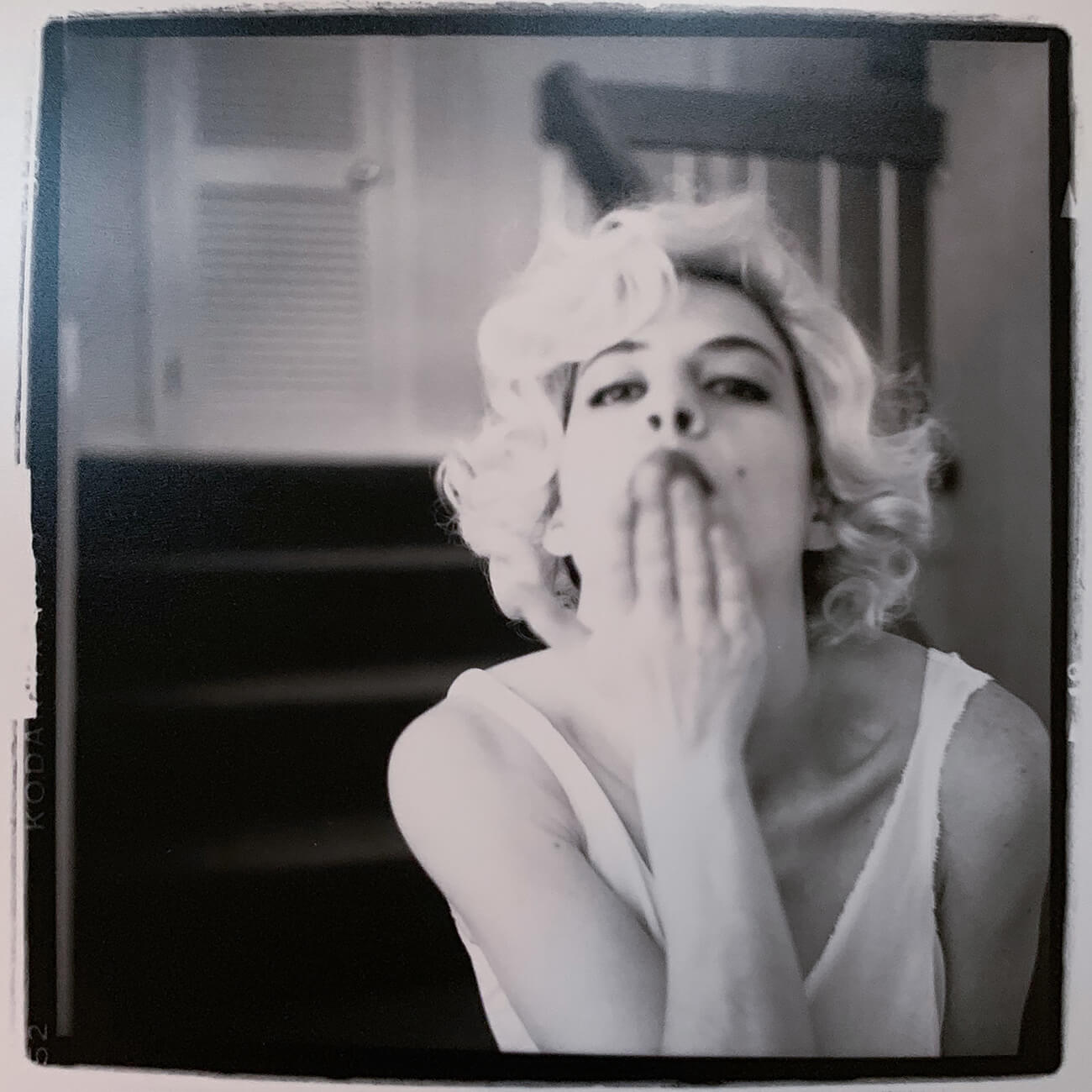
Cindy Sherman Project © Diana Cheren Nygren
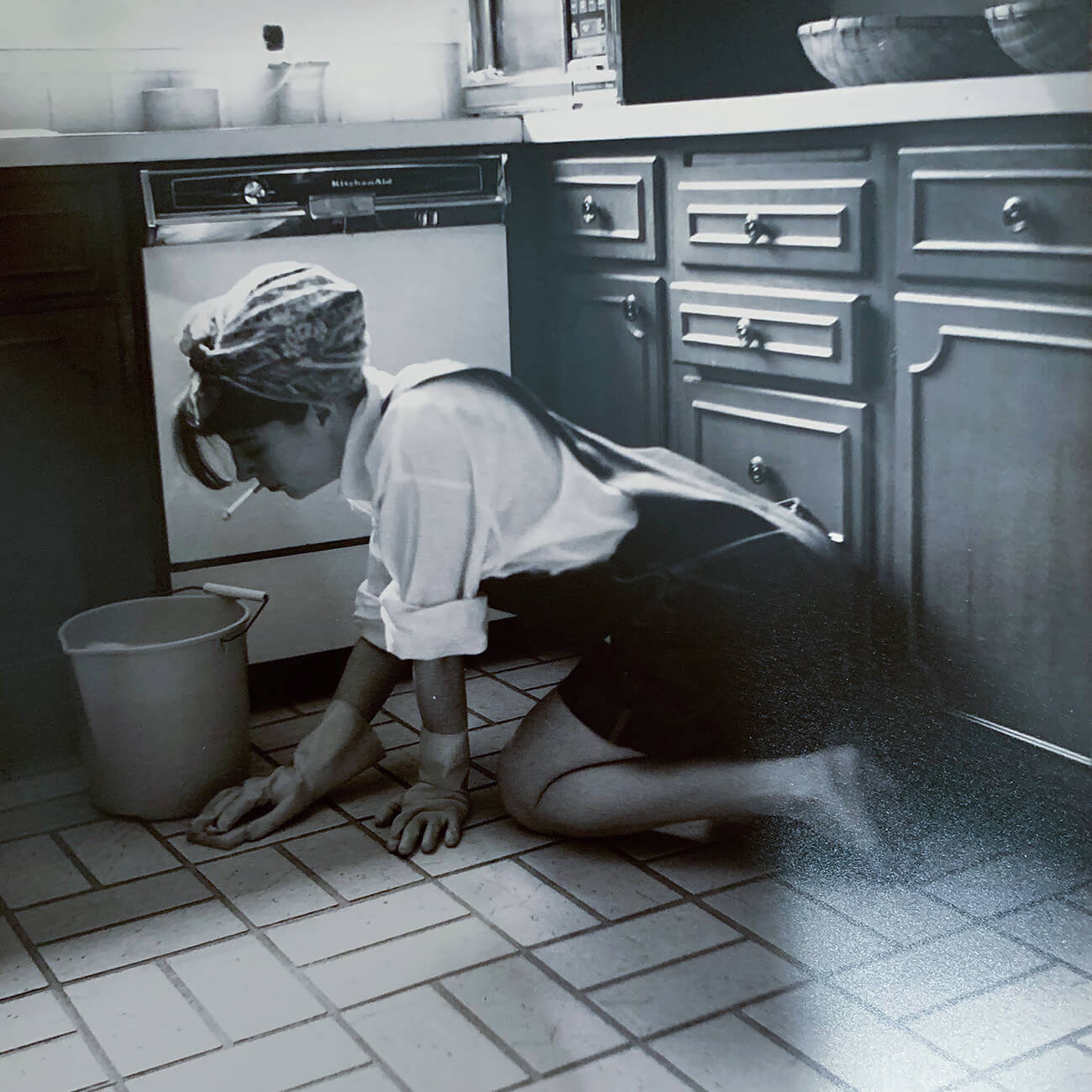
Cindy Sherman Project © Diana Cheren Nygren
Given the nature of my recent projects, most of which involve compositing, I have a fairly atypical approach to developing projects. When I go out with a camera I'm taking photographs of whatever I'm drawn to - skies, people at the beach, urban architecture, nostalgic New England settings. The process of taking photographs is about capturing things I want to remember or think someone else should find worth looking at. I also have three children whom I've photographed obsessively for years. My recent work has come from taking various aspects of this ever-growing archive of images and combining them to tell new stories or reflect on something I'm thinking about.
Can you tell us how you came up with the idea of 'When The Trees Are Gone'?
"When the Trees Are Gone" was my first compositing project. It started largely as a humorous body of work. I was experimenting with what would happen if I took the things I most liked - awe inspiring skies, people-watching at the beach, and layers of urban architecture - and put them all together. But the more I experimented with these compositions, I discovered that the images themselves were saying something (more) sinister about climate change and urban development. And so I began to lean into that. I have always thought that surroundings shape our sense of our place in the world. So it's not surprising that you can't just transplant people who were photographed at the beach into a picture of a city. Their bearing, posture, dress, all start to read differently in that context, and the message in the work arose out of that disconnect. I love urban living, but it raises issues about escape and relaxation, how we slow down, how we connect with nature. And the threat of rising sea levels to many of the largest cities, at least in the United States, is critical.

Hey Down There from the series"When The Trees Are Gone" © Diana Cheren Nygren
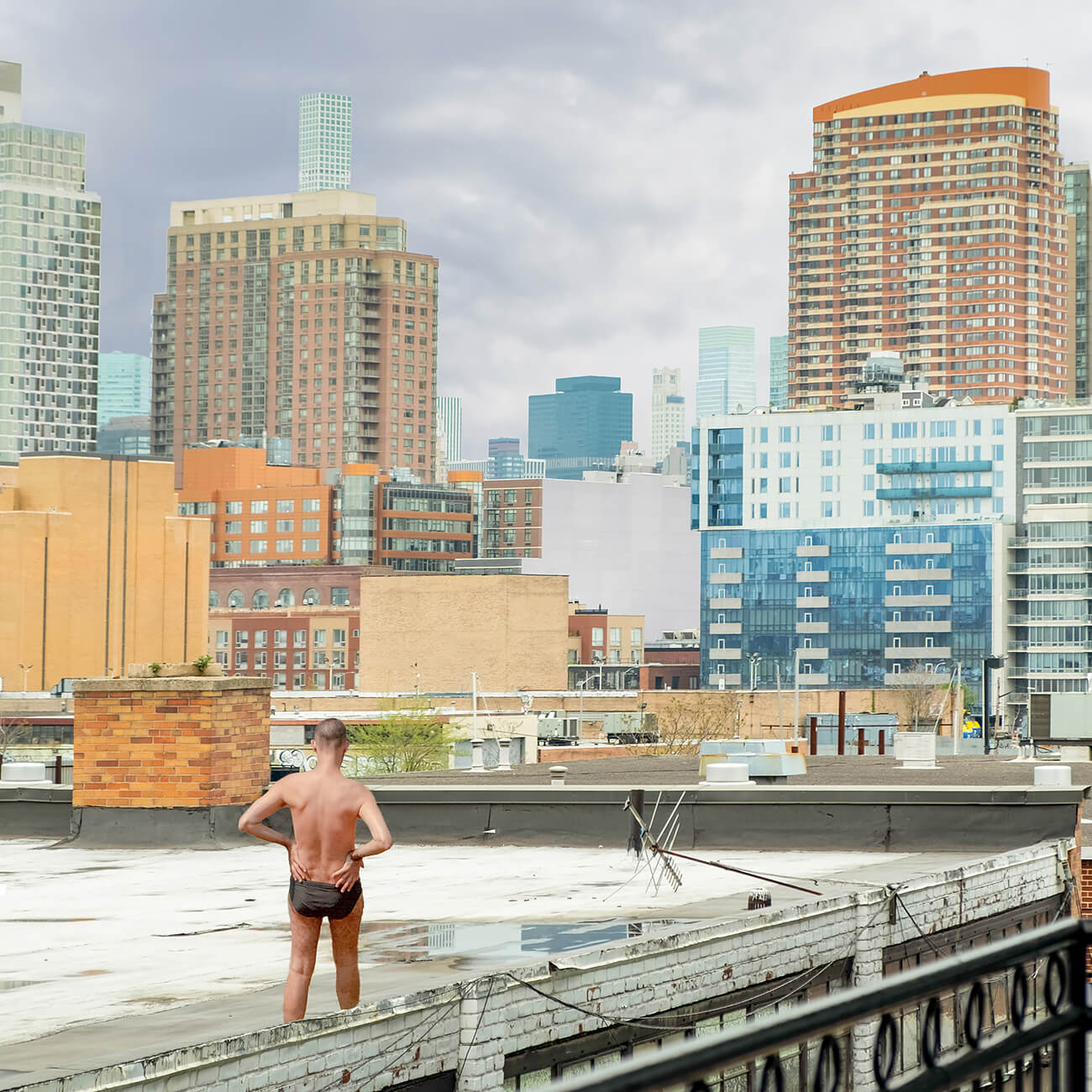
Armageddon from the series"When The Trees Are Gone" © Diana Cheren Nygren
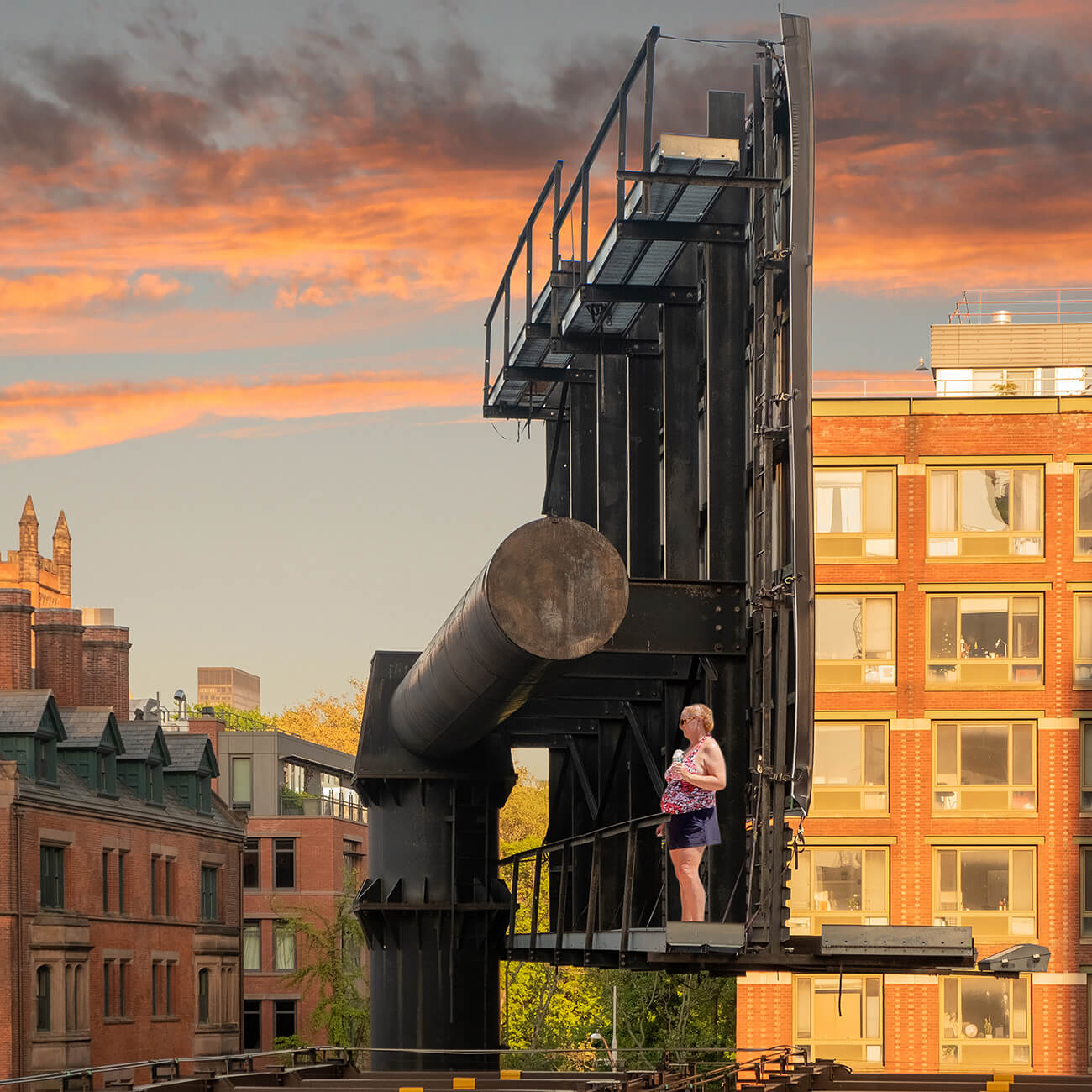
Bottled Water from the series "When The Trees Are Gone" © Diana Cheren Nygren
That is such a good question that I want to answer it, but am struggling to come up with a good response. I feel like it is important for female photographers to be seen and represented, but I don't actually want my gender to factor into how anyone reads or responds to my work. I hope I am engaging universal and global issues in a meaningful way.
Why do you work only in color?
Another great and tricky question. When I first started in film photography I only shot in black and white. I think, like many people, I felt like black and white was the official medium of fine art photography. And yet now I do work pretty exclusively in color. In part, that is simply how I see. Color is one of the first things that catches my eye. I am fascinated by how we see color, and am drawn to extremely subtle color stories. It may also have to do with the fact that I come from an art history background. My images are part of a broader photographic discourse, but I think also part of a continuum with the much longer history of painting.
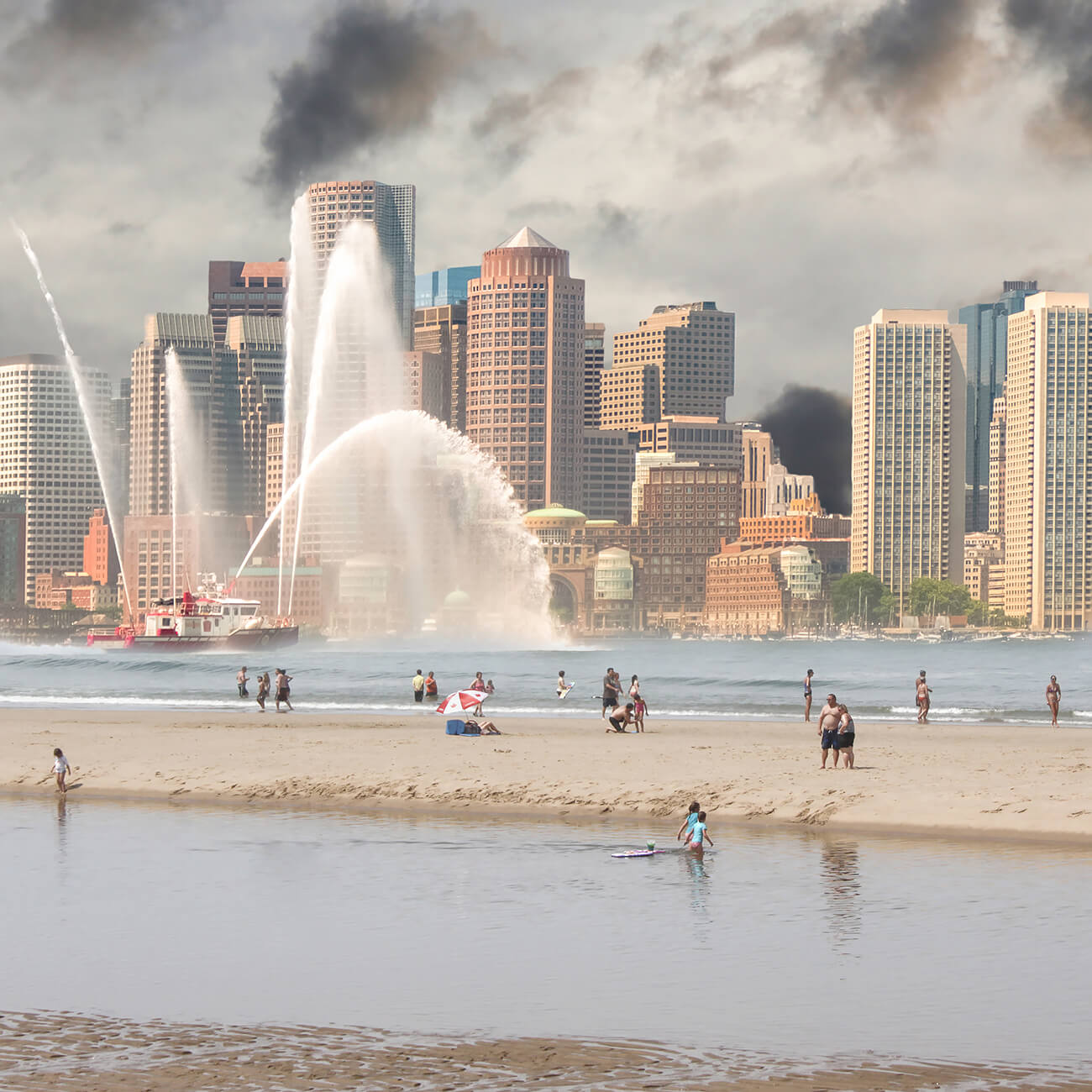
Convergence from the series "When The Trees Are Gone" © Diana Cheren Nygren
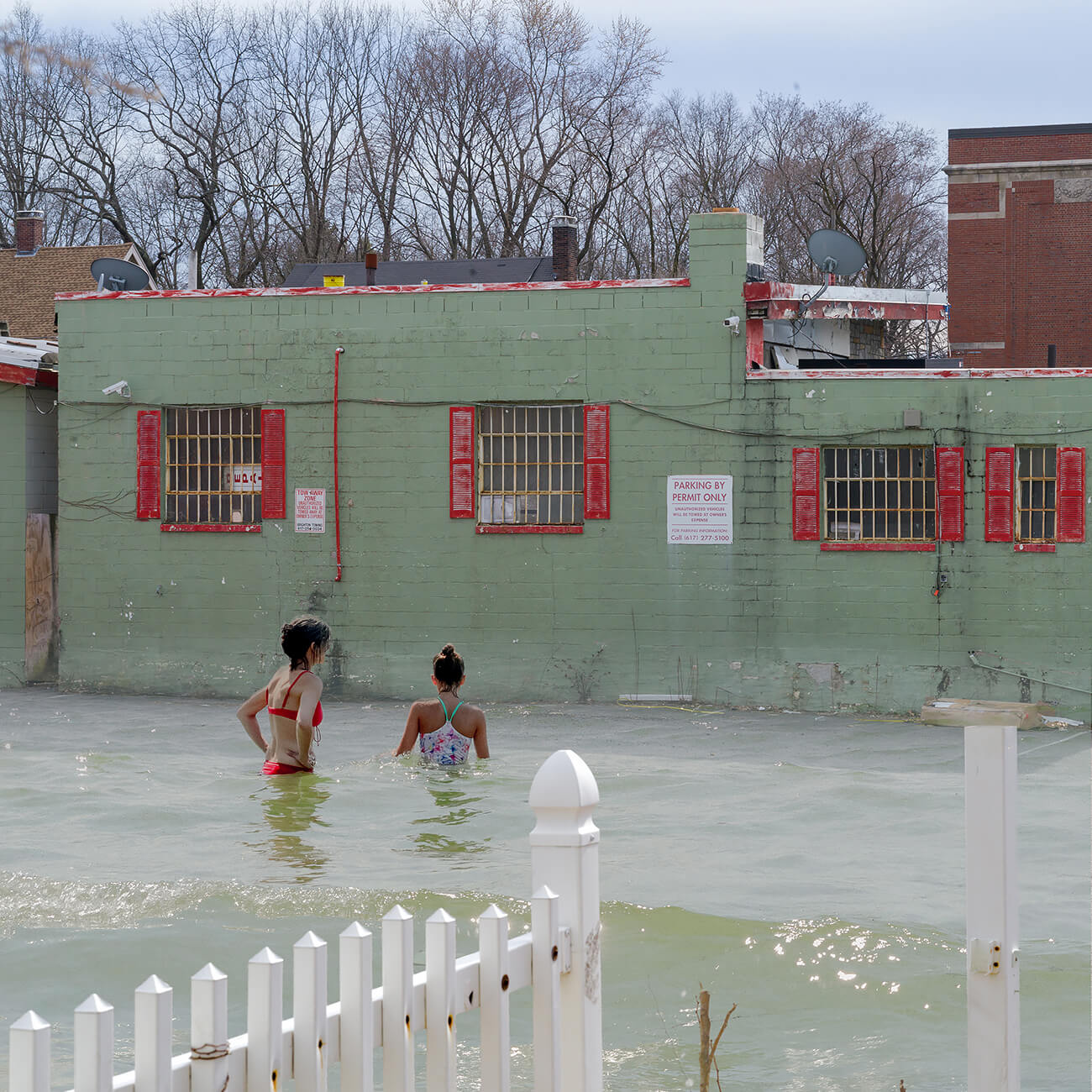
Into The Green from the series "When The Trees Are Gone" © Diana Cheren Nygren
For a number of years I used Canon cameras. I still love my 5D Mark III, especially in tricky light situations, like photographing skies. But a few years ago I got a Hasselblad X1D iiC and I now use that most of the time. I have a number of lenses for the Canon, but I almost always have a 90mm prime lens on the Hasselblad. That combination feels like it matches how I see without a camera. I also have a FujiFilm XT2. It delivers pictures with much more contrast and distinct vibrant colors. They are not entirely in keeping with my photographic style, but it's so small that it is a great option when for some reason I can't bring a large camera with me. I'm kind of torn right now about whether to carry that with me all the time, or whether to use my phone when I can't take along a larger camera. IPhone cameras certainly keep getting better, but when I sit down to work I'm still not really happy with the files it gives me.
Do you spend a lot of time editing your work?
With compositing, editing is a huge part of the work. It takes a fair amount of work to identify the right pieces and then get them all to come together as a single image. I don't edit to alter significant aspects of the original images I'm working with. I do play with the geometry of the background image. Ultimately I am making compositions (usually within a square) and the integrity of the structure of those images is important to me. I want them to be visually appealing in terms of space, line, and color, not just narratively. But that aspect of the editing is generally pretty quick. Selecting the right images from an archive of thousands is key.
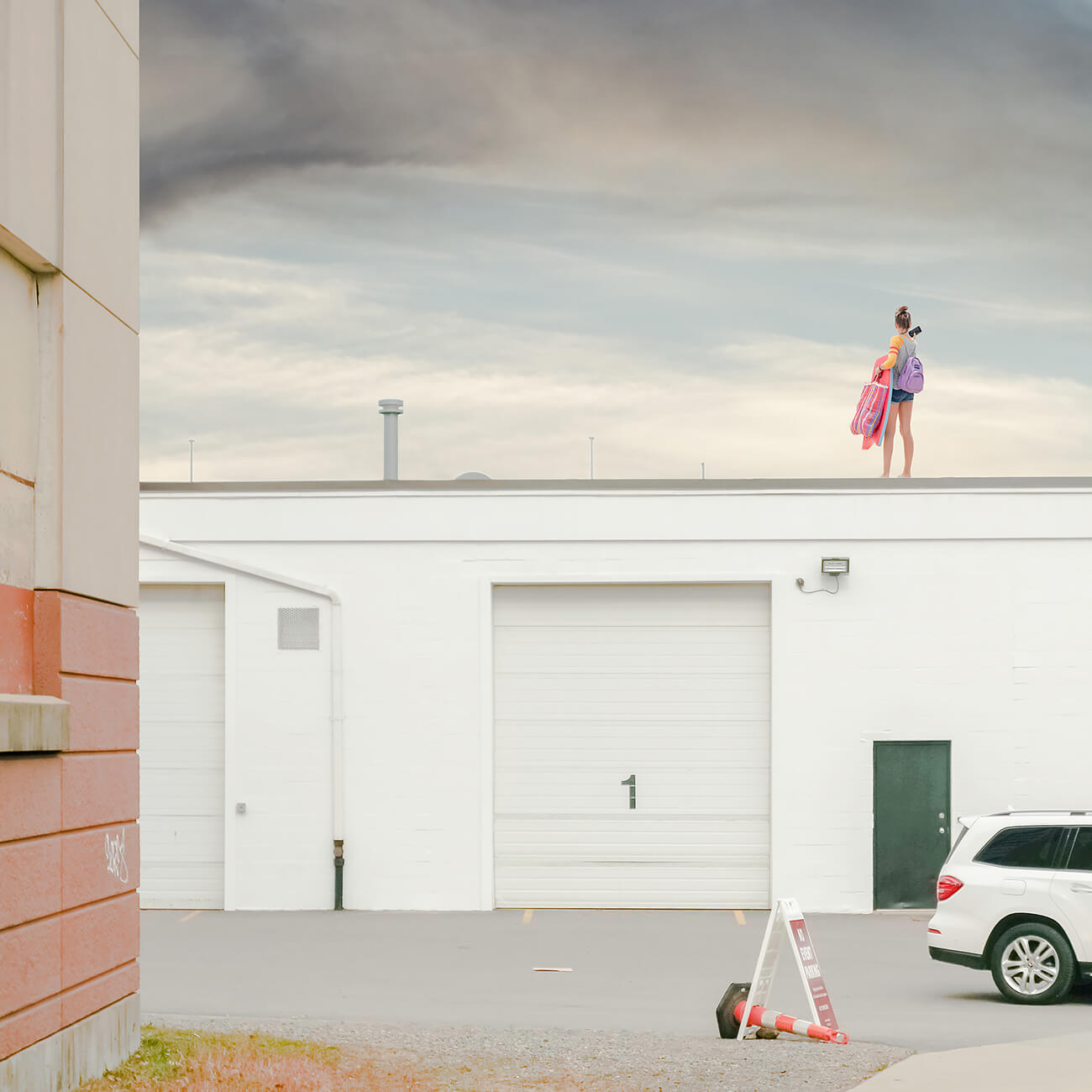
Grey Skies from the series "When The Trees Are Gone" © Diana Cheren Nygren
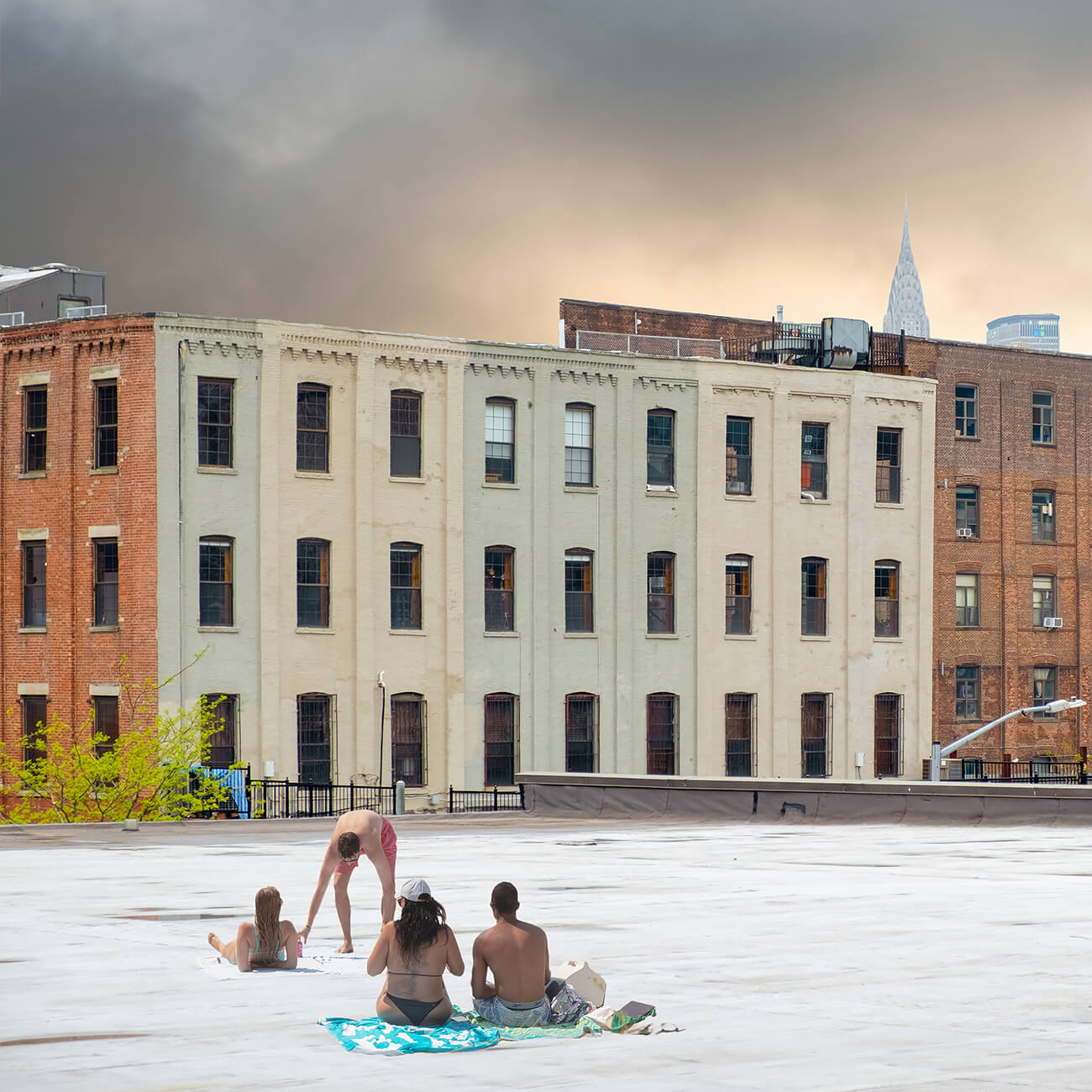
Mars Invasion from the series "When The Trees Are Gone" © Diana Cheren Nygren
I think the experience that touched me most as a photographer was the first time that a student in Italy emailed me and asked if she could use my work for a class assignment. That was completely surreal.
What advice would you give someone who would like to become a photographer today?
Find your voice and then believe in it. You have to have incredibly thick skin. For everyone who loves you work there will be someone who hates it. For every success you have there will be three or four failures, or more. The only way to withstand that is to know who you are as a photographer, and who you are not. You can't try to be someone else, do everything, or satisfy everyone. You are going to get a lot of feedback and you need to be able to distinguish what feedback is relevant to you and your work and discard the rest. But once you find someone whose feedback you value, and feedback you think is pertinent, listen. Don't be afraid to work and rework something even after you think it's done. Good, relevant, critical feedback is usually the thing that will push your work to the next level.
Favorite(s) photographer(s)?
Too many to name.
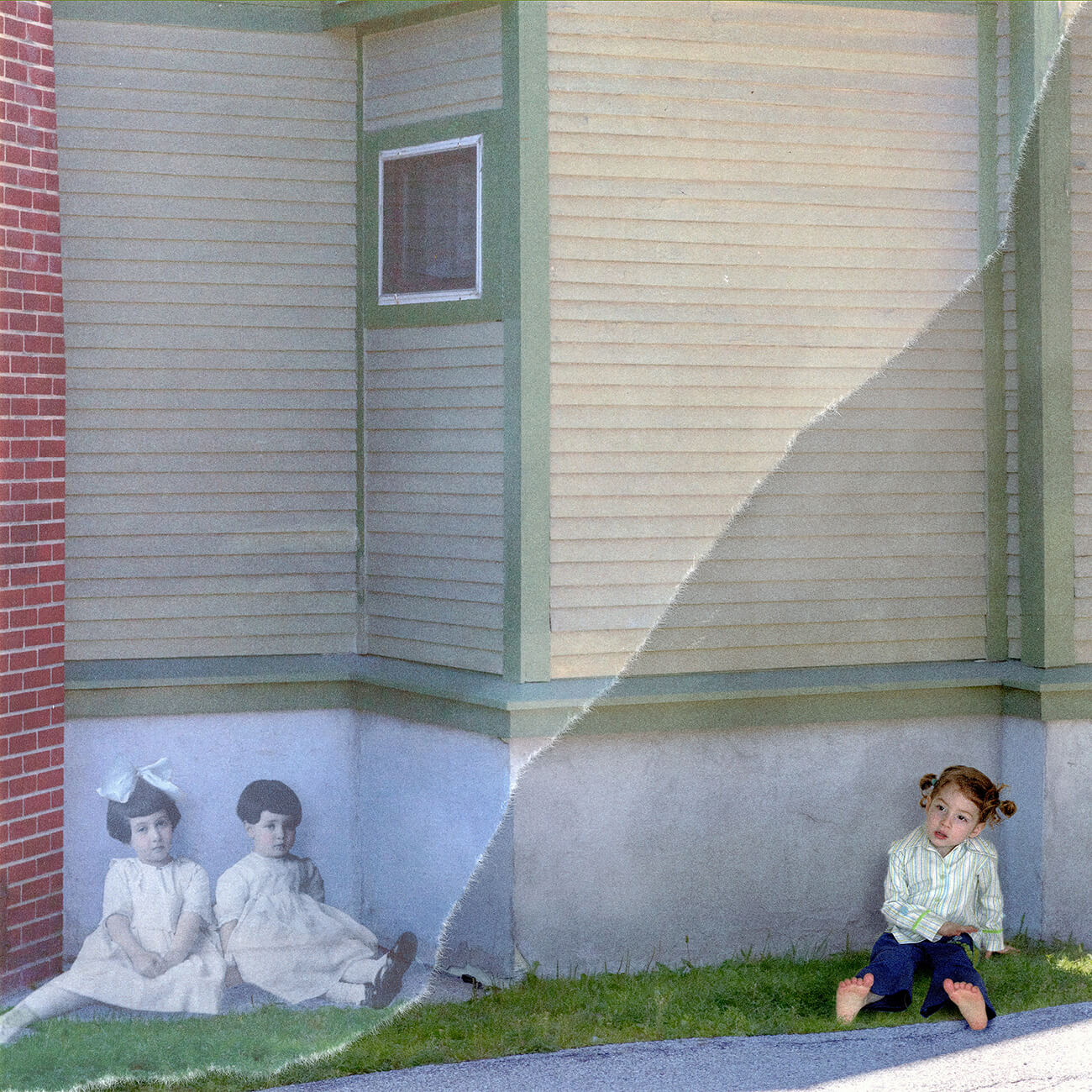
Babydolls from the series "Persistence of Family" © Diana Cheren Nygren
I have a number of projects in the works. One of which is almost ready for me to share! Beyond that, I am playing around with more direct ways to address issues of the environment and climate change. There are so many important social and political issues to discuss, but unless we figure out how to be truly proactive in saving the planet, anything else will essentially become irrelevant.
What 3 words describe your photography style?
Narrative. Painterly. Structured.
If you weren't a Photographer, what would you be doing?
I think I'd be on vacation - taking pictures.
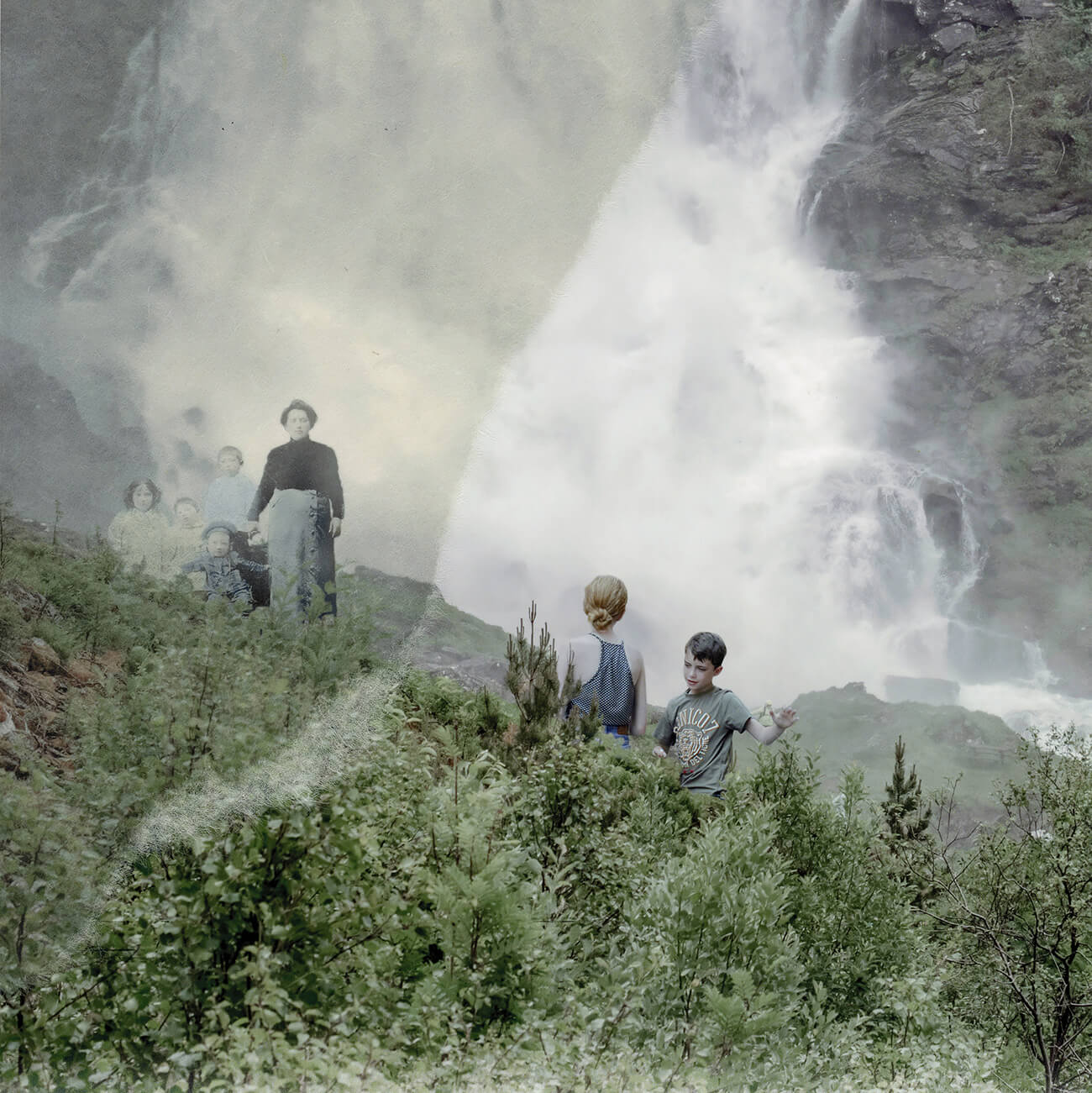
Before the Waterfall from the series "Persistence of Family" © Diana Cheren Nygren
